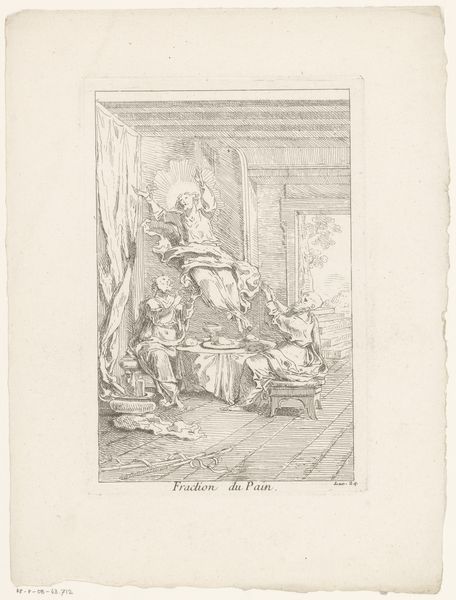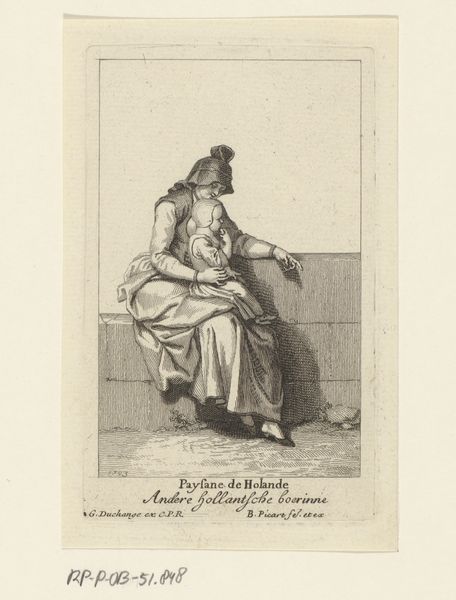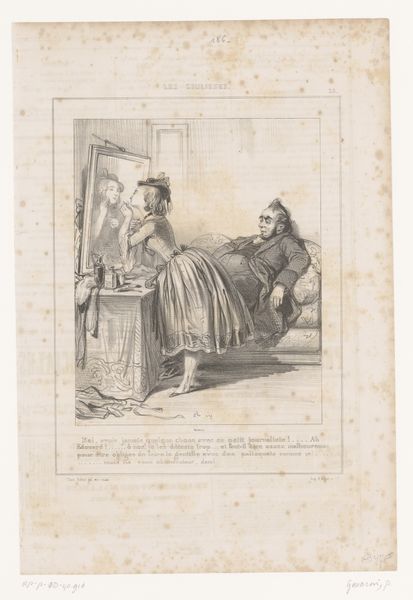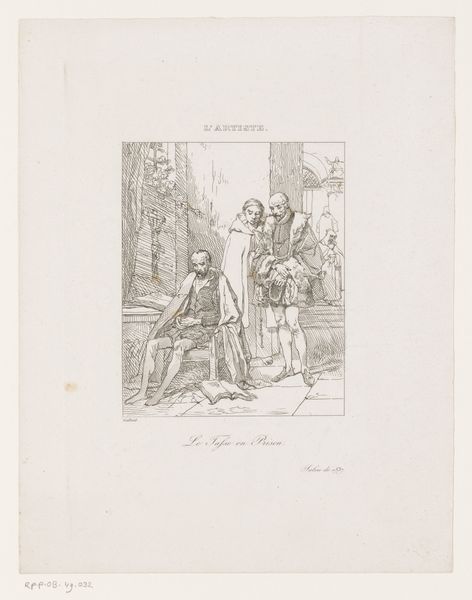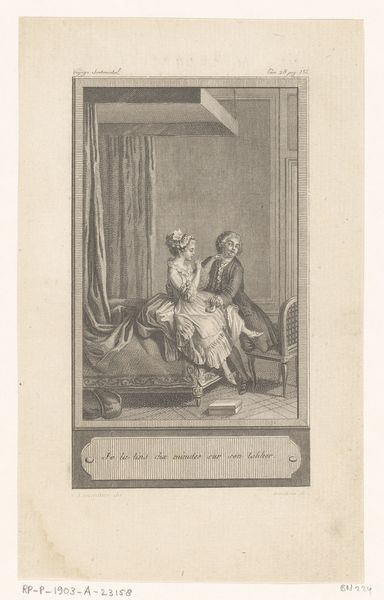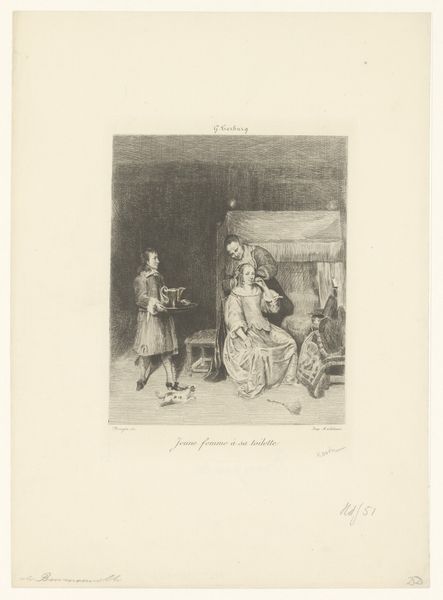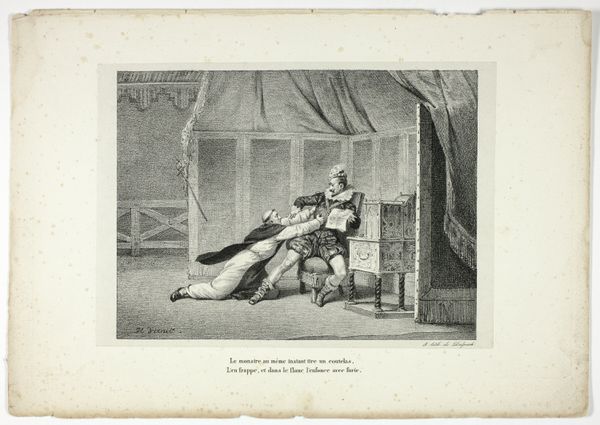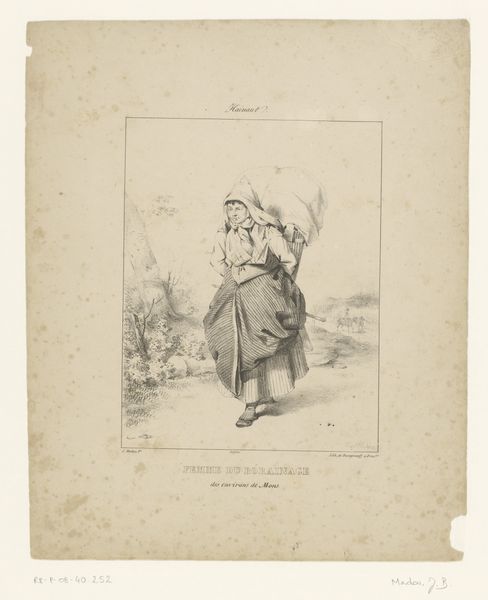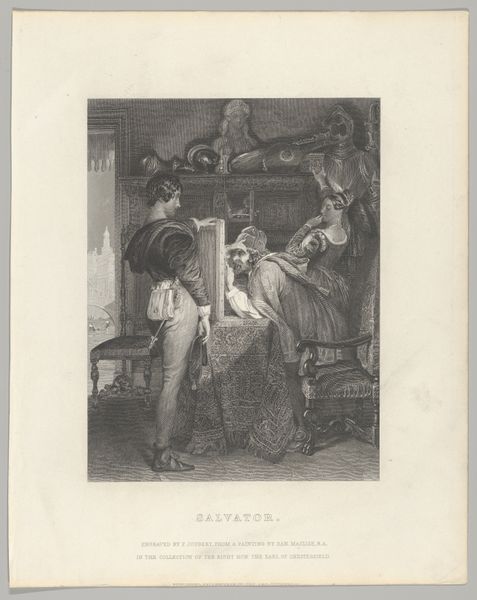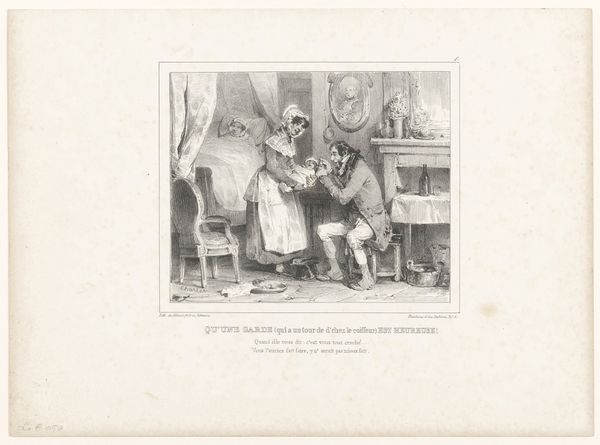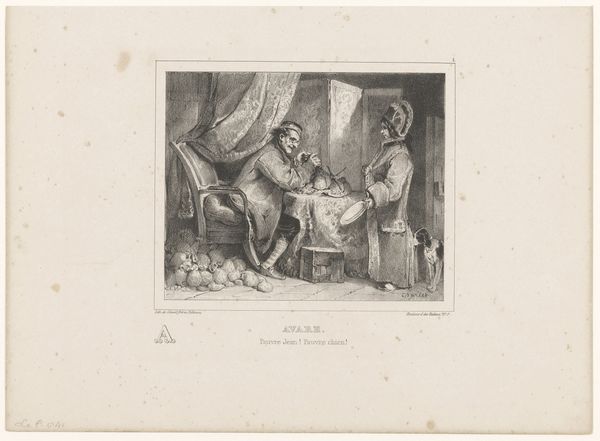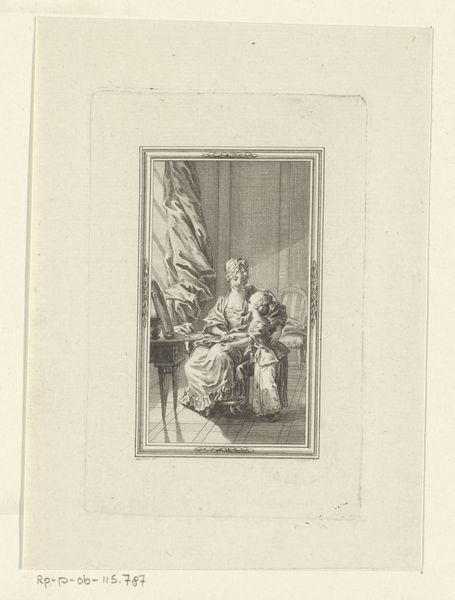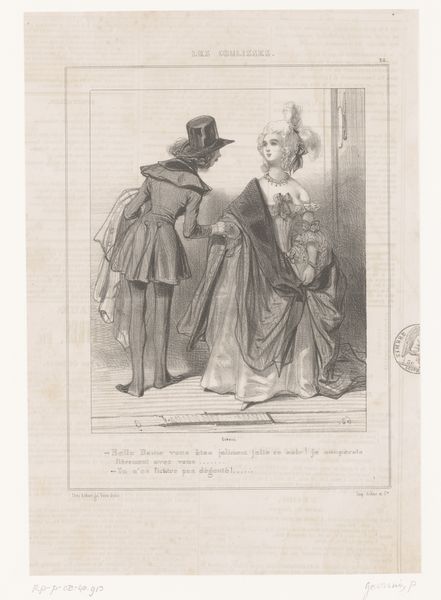
print, engraving
#
narrative-art
# print
#
figuration
#
romanticism
#
engraving
Dimensions: height 296 mm, width 228 mm, height 455 mm, width 296 mm
Copyright: Rijks Museum: Open Domain
This print, "Omslag voor achttien prenten met liefdestaferelen" was made by Charles Philipon in Paris, sometime in the first half of the 19th century. It is an intriguing example of lithography, a technique that democratized image-making in its day. Unlike earlier forms of printmaking, which relied on laborious carving or etching, lithography used a flat stone and greasy crayon. The artist draws directly onto the stone, and then through chemical processes, the image is transferred to paper. Look closely, and you can appreciate the subtle gradations of tone and the fine lines achieved through this method. Philipon was deeply involved in the political life of his day, and was imprisoned several times. He understood that the means of production influenced its reception. He chose lithography for its accessibility. Consider how the materiality of printmaking allowed for social commentary and dissemination of ideas on a mass scale, blurring the lines between art, craft, and political discourse.
Comments
No comments
Be the first to comment and join the conversation on the ultimate creative platform.
